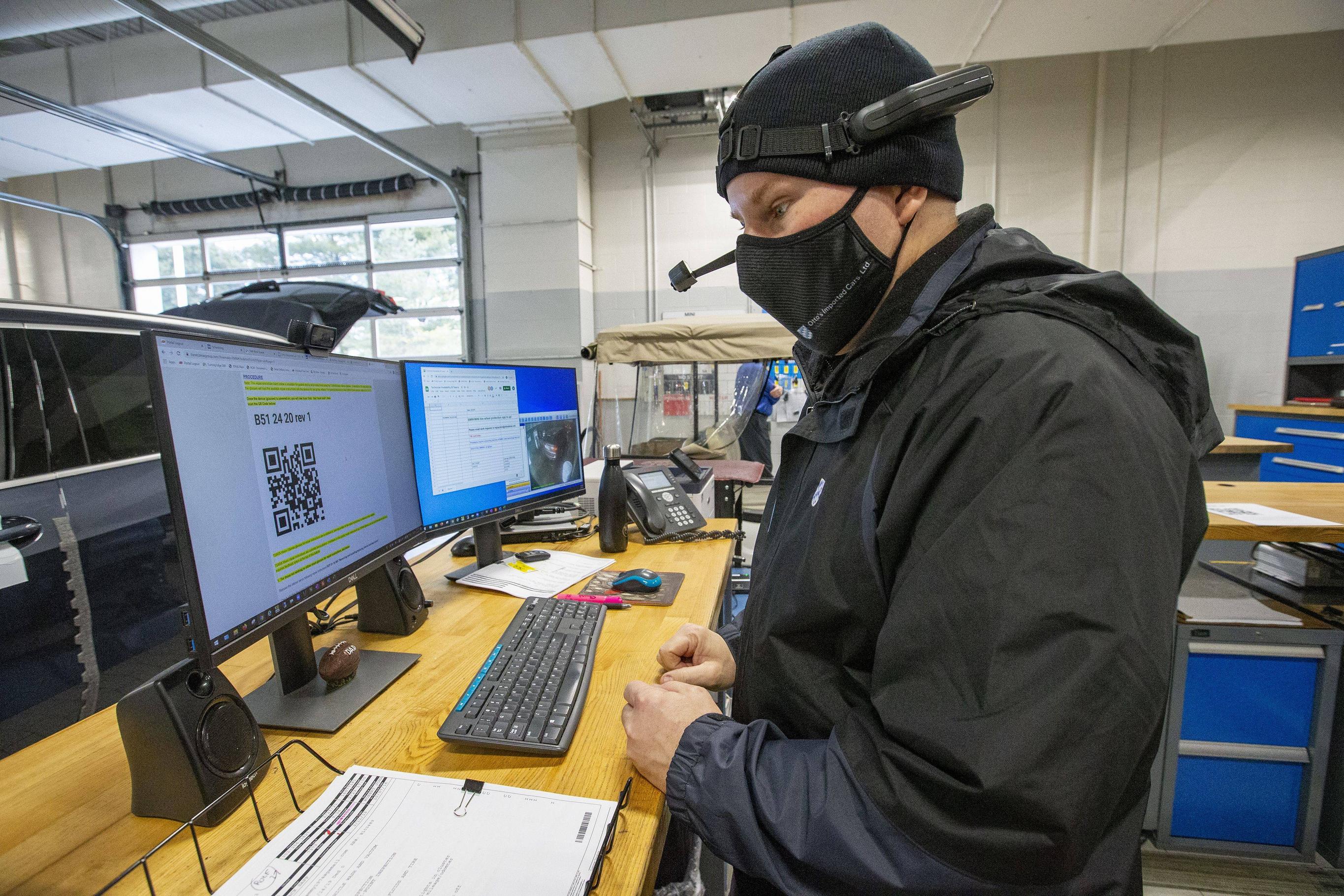
Are you concerned about your oil change intervals? This article will discuss Extended-Life oil, which oils can prolong your car's oil lifespan, as well as vehicle age. These factors will help guide you in determining the best oil change interval. Before we start, let's define engine oil. It is a special lubricant for internal combustion engines. Although it's not the exact same as cooking olive oil, it serves an important purpose - to lubricate engines and their heads.
Oils with extended-life oils last longer between oil changes
Premium synthetic oils can increase the interval between oil changes up to 10 or 12 miles. Although newer vehicles are able to use synthetic oil, older vehicles may not have been filled with better quality oil when they were manufactured. They may still use conventional, petroleum-based oil. Extended-Life oils, in either case, are an excellent alternative for older cars. These oils can last for many months depending on the brand.

The manufacturer of the extended-life oil will tell what mileage your engine can go before you need to change it. It's important to note that this figure is based on optimum conditions and will vary if you use your vehicle differently. Extended-life oils can extend oil life by up to 4000 miles. Synthetic oils can be more efficient than traditional oils in terms of breaking down, and this can increase the time between oil changes.
Conditions driving
AAA conducted a study and found that 6 percentage of drivers said they drove most of their driving time in "severe." Six percent of drivers said they drive in severe conditions at least half the time. Furthermore, only 62 percent of respondents reported that their driving patterns are consistent with their driving circumstances. Whether you are traveling across the country, or just cruising around town, you need to find a mechanic who understands and caters to your particular driving conditions. By doing this, you will save time as well as money on your car's service.
Although the recommended interval is the best time for your car to get its oil changed, it's important to remember that driving habits can have an impact on the oil quality. If you are prone to squeezing your oil out, it is important to have it changed immediately. You should also remember that oil can only handle so much heat before it becomes a hot mess. You can contact your local oil change company to schedule an appointment if your car is having oil problems.
Vehicle age
The best way of finding out how many miles your oil can last between oil changes is to look at the oil type you use. There are three types of oils: synthetic, conventional and a mix of both. The age of your car and the amount of driving you do will determine which oil you choose. Synthetic oil is usually more expensive than conventional oil, but offers many benefits. It lasts longer and is better for our environment.

The rule of thumb for mileage is 3,000 miles. Most luxury cars and high performance vehicles are built to last between 5,000-10,000 miles. Some drivers push the limits and insist on oil changes at every engine light. This rule will bring you a reliable car.
FAQ
What is the distinction between a mechanic or an automotive technician?
The two are similar but not identical. Both a mechanic and an automotive technician can repair cars.
A mechanic must have good manual dexterity and be able to perform simple tasks quickly. A mechanic must be able diagnose and fix problems quickly and accurately.
An automotive technician requires more technical skills than a mechanic. They must be capable of reading blueprints and using tools such as drills, wrenches, etc.
They should be able safely to perform complex procedures. They must also be familiarized in different types and electrical systems.
They must also be capable of understanding how parts interact.
This means that mechanics usually make less money than automotive technicians. There are many job opportunities in both.
What length of an automotive course is it?
An automotive course is three years long.
The first year is spent on theory, learning all about cars. The second year will be spent in practical training. Here you will learn how fix engines, drive and other mechanic jobs. The final year includes a placement at an auto shop. This gives you real-world experience fixing real problems.
How can I prepare myself for a mechanic apprenticeship
It is important that you understand the ramifications of your actions. You should be familiar with the mechanics of cars, and how they work. You will be able to know exactly where to begin when you arrive at the garage for your first day.
It is also important to be able to fix small problems like broken lights or tires.
This will teach you how to diagnose problems and fix them yourself.
It is also important to know how the different pieces fit together in order to put them together again.
Finally, be proficient in using tools safely and efficiently.
These things will enable you to be a competent mechanic.
What length is an automotive mechanic apprenticeship?
An automotive mechanic apprenticeship takes around three years to complete. This includes two years in school and two as an apprentice. The first year teaches you all aspects, from theory to practical skills and safety procedures. You will also learn to use tools efficiently and safely during this period. After the first year, a second year will be spent on-thejob training. This year you'll get experience in different trades. These are also the times you can attend formal courses.
The final year of this program is spent in obtaining qualifications and becoming certified in your field. These include NVQs, which are obtained after passing industry-specific exams. Additionally, HNCs are Higher National Certificates that cover general subjects such management, customer service, and business administration. City & Guilds certificates may be available for those who are interested in becoming qualified in specific trades.
What qualifications does a truck mechanic need?
This job requires you to be a skilled mechanic, although you do not need any formal training. Your experience is valuable because it allows you to diagnose problems quickly, efficiently and effectively.
Additionally, you have a solid knowledge of diesel technology that will enable you to determine what parts are necessary to repair our vehicles.
How long does a good mechanic take?
Expert mechanics take years of practice and extensive experience. You can learn the most effective way to fix cars by learning from a professional mechanic.
You will spend time in a workshop learning everything you can about cars. Mechanical engineering books will be required to learn about mechanics and design.
Additionally, you will need to attend an auto school.
The most important thing is to start early. Do not wait to learn automotive technology. You can get certified as a mechanic by getting started right away!
Statistics
- According to the BLS, the median annual salary for automotive service technicians and mechanics in the United States was $44,050 in May 2020. (uti.edu)
- According to the BLS, total auto technician employment is expected to exceed 705,000 by 2030. (uti.edu)
- 52% of Mechanics in the United States think their salaries are enough for the cost of living in their area. (indeed.com)
External Links
How To
How to properly diagnose your car for repair
The symptoms of your vehicle are the first thing you need to look at in order to determine whether it is in dire need of repairs. Follow these steps to properly diagnose your vehicle.
-
Check engine lights. Check the dashboard light indicators such as the engine light indicator, the oil pressure gauge, the battery light indicator, the coolant temperature gauge, and the RPM gauge. If any of them have been flashing for several days, it may mean something is wrong with your vehicle.
-
Take a look at the treads. If the tires are worn out, they could cause problems with handling and braking. You should inspect the treads on your wheel. They should look clean and be smooth. The best way to do this is to remove the wheels and take them off. Use a flashlight to see how well the treads are worn.
-
You should always monitor the level brake fluid. You must always monitor the level of your brake fluid. You can ensure that your brakes are working properly by monitoring the level of brake fluid in your vehicle. Low brake fluid levels can cause brake failure when you apply pressure.
-
Make sure to test the suspension system. Vehicles usually have a suspension system that helps absorb shocks and vibrations while driving. It improves control and allows for smoother accelerations or decelerations. A suspension problem can cause your vehicle to feel wobbly and shake uncontrollably. To determine whether your vehicle may have a suspension issue, you can try to put weight on the rear or front axle and watch the movement.
-
Take a look at the steering column. The steering column connects the steering wheel to all other components of the vehicle. Sometimes, steering columns are damaged by accidents. You should replace your steering column if it feels loose or unstable.
-
Observe the exhaust pipes. The exhaust pipes transport gases from the combustion chamber to outside. If the exhaust pipe is damaged or leaks, harmful fumes can enter your cabin. If your tailpipe bends, it is important to fix it immediately.
-
Take a look at the underside of your hood. Take a look underneath the hood to find any strange or unusual items. Your engine could be leaking fluids. A professional technician should be contacted if your engine compartment emits an unusual smell.
-
You should inspect your air filter. The vehicle's outside environment may cause the air filter to collect dust and debris. Vehicles that have a dirty air filter will not run well. Replace your air filter regularly.
-
Check the fan belt. The fan belt that connects your vehicle to the transmission is called the engine fan belt. If the fan belt is damaged, the engine won’t turn. It's easy to replace the belt. You only need a screwdriver or pliers to replace your belt.
-
Verify the radiator hoses. The radiator-hose carries water to the engine. If it becomes cracked or damaged, it can leak hot liquid onto the engine. The hose can be repaired with a pair or needle-nosepliers, and a wire brush.
-
Make sure you have the windshield wipers checked. Windshield wipers use electricity for snow and rain removal. If they stop working, streaks could be left on your glass. Change the washer fluid to fix the problem.
-
You should inspect the cables. The battery cables supply power to your car's electrical systems. If you are replacing batteries, disconnect the negative cord first. Failure to do so can damage your alternator.
-
You should check the headlights. Headlights illuminate the road ahead of you. It can lead to poor visibility if they aren't working properly. You can check the bulbs to make sure they aren't burned out.
-
Pay attention to the lights. The lights are there to warn other drivers if they approach you at night. If one doesn't work, it could distract you and lead to an accident.
-
Make sure you check your brakes. Before you have a collision, brakes slow down your car. If the brakes fail to work correctly, your car could lose control and collide with another vehicle.
-
Change your oil. The oil keeps your engine well lubricated. It helps prevent metal parts from wearing out too quickly. It is recommended to change the oil each month.